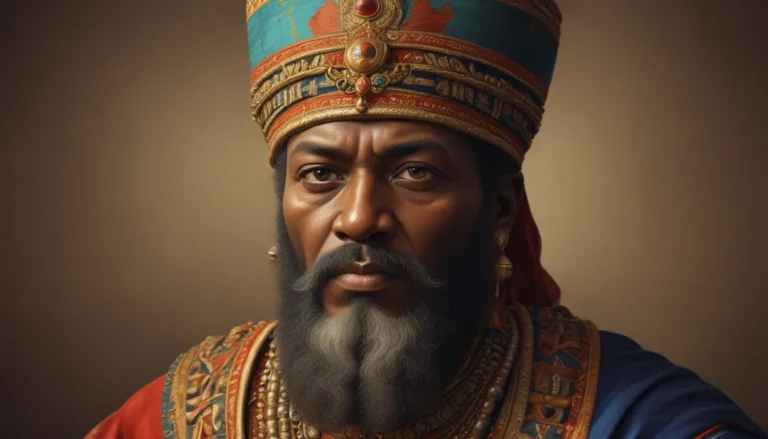The images in our articles may not match the content exactly. They are used to grab your attention, not to show the exact details in the text. The images complement the text but do not replace it.
Welcome to a captivating journey through the life and achievements of Alhazen, also known as Ibn al-Haytham, a brilliant Muslim scientist whose groundbreaking contributions to optics, astronomy, and mathematics continue to shape the world of science today. Let’s delve into 17 fascinating facts about this remarkable figure and uncover the immeasurable impact of his work on our understanding of the natural world.
Alhazen: A Trailblazer in the Scientific World
Alhazen, a prominent Muslim scientist born in Basra, Iraq, in the 10th century, was a pioneering figure in the fields of optics and applied mathematics. His influential theories on vision, light, and reflection revolutionized our understanding of optics and laid the foundation for the modern scientific method during the Islamic Golden Age.
Alhazen’s Remarkable Contributions to Science
- Alhazen, also known as Ibn al-Haytham, was a highly influential Muslim scientist who made groundbreaking contributions to optics, astronomy, and mathematics.
- He is often referred to as the “Father of Optics” for his revolutionary work in the field.
- Alhazen was the first to provide a comprehensive explanation of how vision works, proposing that light forms an inverted image on the retina, which the brain interprets to create the perception of sight.
- His astronomical studies focused on predicting the movements and positions of celestial objects, with practical applications in navigation and timekeeping.
- Alhazen challenged the ancient Greek theories of vision through empirical experiments, debunking prevailing beliefs with evidence-based reasoning.
- He emphasized the importance of experimentation and observation in scientific inquiry, laying the groundwork for the formalization of the scientific method in later centuries.
- Alhazen’s work on optics influenced renowned scientists like Isaac Newton and Johannes Kepler, paving the way for the development of optical instruments such as telescopes and microscopes.
- In addition to his work on optics, Alhazen made significant contributions to mathematics, particularly in algebra and geometric optics.
- His experiments on refraction and the behavior of light through various media provided the foundation for modern optics and the development of lenses.
- Alhazen’s work on the camera obscura, an early optical device, contributed to the understanding of optics and the principles behind photography.
- He explored the field of psychology, studying visual perception and the relationship between light, color, and object recognition.
- Alhazen’s writings were rediscovered and translated during the European Renaissance, leading to a renewed interest in his ideas and their integration into Western scientific thought.
- His multidisciplinary approach to science showcased the interconnectedness of various disciplines, influencing a holistic understanding of the natural world.
- Alhazen’s legacy lives on in modern scientific institutions, where his contributions to optics, mathematics, and astronomy are celebrated and recognized.
- Throughout his life, Alhazen displayed boundless intellectual curiosity, dedicating himself to a relentless pursuit of knowledge and truth.
- His work continues to inspire scientists and scholars worldwide, serving as a testament to the enduring impact of human curiosity and intellect in the pursuit of scientific advancement.
Unraveling the Mysteries of Alhazen’s Work
Alhazen’s exceptional contributions to the fields of optics, astronomy, and mathematics have left an indelible mark on the history of science. His insatiable quest for knowledge, emphasis on empirical evidence, and groundbreaking experiments have shaped the way we understand light, vision, and the natural world. As we reflect on the legacy of Alhazen, we are reminded of the profound impact that one individual can have on the course of scientific discovery and human understanding.
FAQs: Uncovering More About Alhazen
- Who was Alhazen?
-
Alhazen, also known as Ibn al-Haytham, was an Arab mathematician, astronomer, and physicist born in Basra, Iraq, in 965 AD. He made significant contributions to various branches of science.
-
What were Alhazen’s major contributions?
-
Alhazen is best known for his work on optics and visual perception, revolutionizing our understanding of how light interacts with the eye and proposing a new theory of vision based on empirical evidence.
-
How did Alhazen influence the scientific method?
-
Alhazen’s emphasis on empirical evidence and experimentation played a crucial role in shaping the scientific method, laying the foundation for evidence-based reasoning and the systematic approach to scientific inquiry.
-
Are Alhazen’s works still relevant today?
-
Absolutely! Alhazen’s discoveries in optics continue to be studied and referenced by scientists today, showcasing the enduring impact of his pioneering research on our understanding of light and vision.
-
Was Alhazen recognized for his contributions during his lifetime?
- Alhazen’s work was highly regarded during his time, with influential rulers and scholars recognizing the significance of his groundbreaking theories and experiments in optics and astronomy.
In Conclusion
Alhazen’s legacy continues to inspire and educate scientists and scholars around the world, serving as a testament to the power of human curiosity and intellect in the pursuit of scientific knowledge. His groundbreaking discoveries in optics, astronomy, and mathematics have transcended centuries, leaving a lasting impact on the fields of science and shaping the way we perceive the natural world. As we celebrate the life and achievements of Alhazen, we honor his unparalleled contributions to the advancement of human knowledge and the exploration of the mysteries of the universe.






